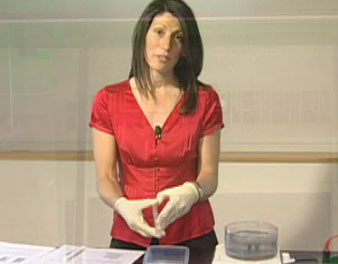This Protein Purification video lesson is intended to give students some insight into the process and tools that scientists and engineers use to explore proteins. It is designed to extend the knowledge of students who are already somewhat sophisticated and who have a good understanding of basic biology. The question that motivates this lesson is, “what makes two cell types different?” and this question is posed in several ways. Such scientific reasoning raises the experimental question: how could you study just a subset of specialized proteins that distinguish one cell type from another? Two techniques useful in this regard are considered in the lesson. This video lesson will easily fit into a 50-minute class period, and prerequisites include a good understanding of cellular components (DNA vs. Protein vs. lipid) and some understanding of the physical features of proteins (charge, size etc). The simple cell model used here can be assembled in any kind of container and with any components of different solubility, density, charge etc. In-class activities during the video breaks include discussions, careful observations, and the use of a “very simple cell” model to explore two techniques of protein purification. Students and teachers can spend additional time discussing and exploring the question of “how we know what we know” since this lesson lends itself to the teaching of the process of science as well.

